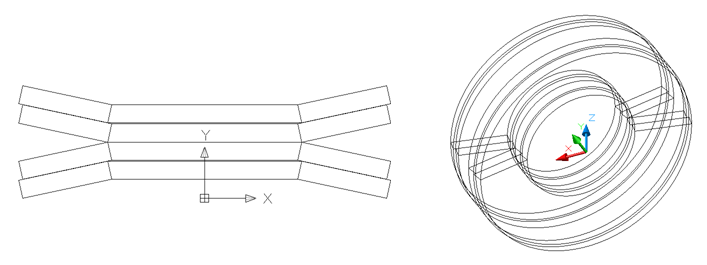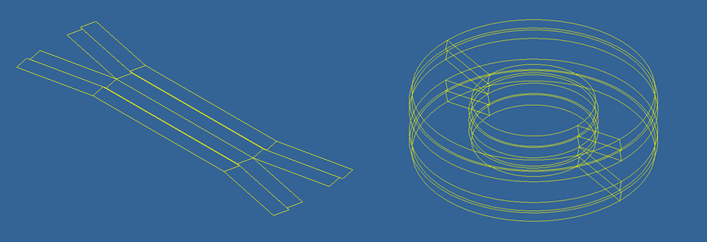Starting from v1.06, Disc Spring Solver allows the user to convert the created spring stack into tow kind of CAD format: DXF and IGES.
These are the format definitions directly from Wikipedia:
"AutoCAD DXF (Drawing Interchange Format, or Drawing Exchange Format) is a CAD data file format developed by Autodesk for enabling data interoperability between AutoCAD and other programs."
"The Initial Graphics Exchange Specification (IGES) (pronounced eye-jess) defines a neutral data format that allows the digital exchange of information among Computer-aided design (CAD) systems."
"Using IGES, a CAD user can exchange product data models in the form of circuit diagrams, wireframe, freeform surface or solid modeling representations. Applications supported by IGES include traditional engineering drawings, models for analysis, and other manufacturing functions."
The picture shows two .dxf files created with Disc Spring Solver and loaded with a DXF viewer. You can decide, during the creation of the file, if you want a 2D or a 3D file.

Looking at the following picture you can see instead the IGES files, 2D or 3D, created by Disc Spring Solver load with a common iges viewer.

Looking at the converted files, for instance the .dxf ones, it is possibile to see how Disc Spring Solver is more precise than other softwares or excel sheets concerning disc springs and Belleville washers.
Looking at the picture you can see that, in order to respect all the construction constraints (parallelism, perpendicularity and dimensions), the spring base angle must be obligatorely 12,04° wide.
Trying to insert the same values for diameters, etc.. in other softwares you will see that the returned value of the base angle is a little less than 12°, this can appear as a small difference but the effect on the resulting CAD models (and not only) can be very bad, above all if you are using spring packets made by more than one spring.

Look at the following picture and click to enlarge it: things are even worst if you are using springs with contact flats and reduced thickness.

This site is © Copyright 2022 SpringSolver. All Rights Reserved.
|

